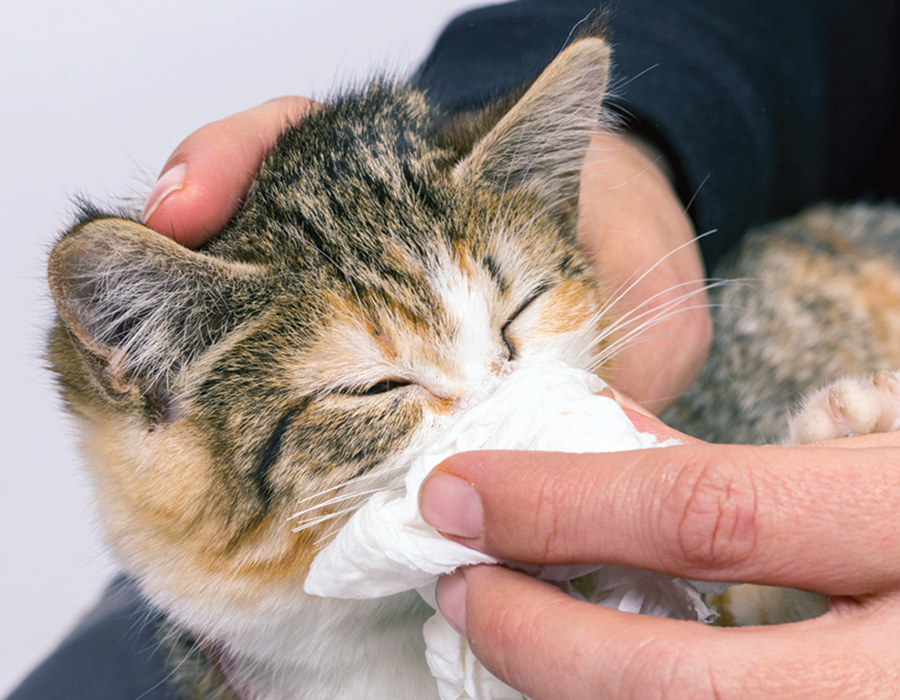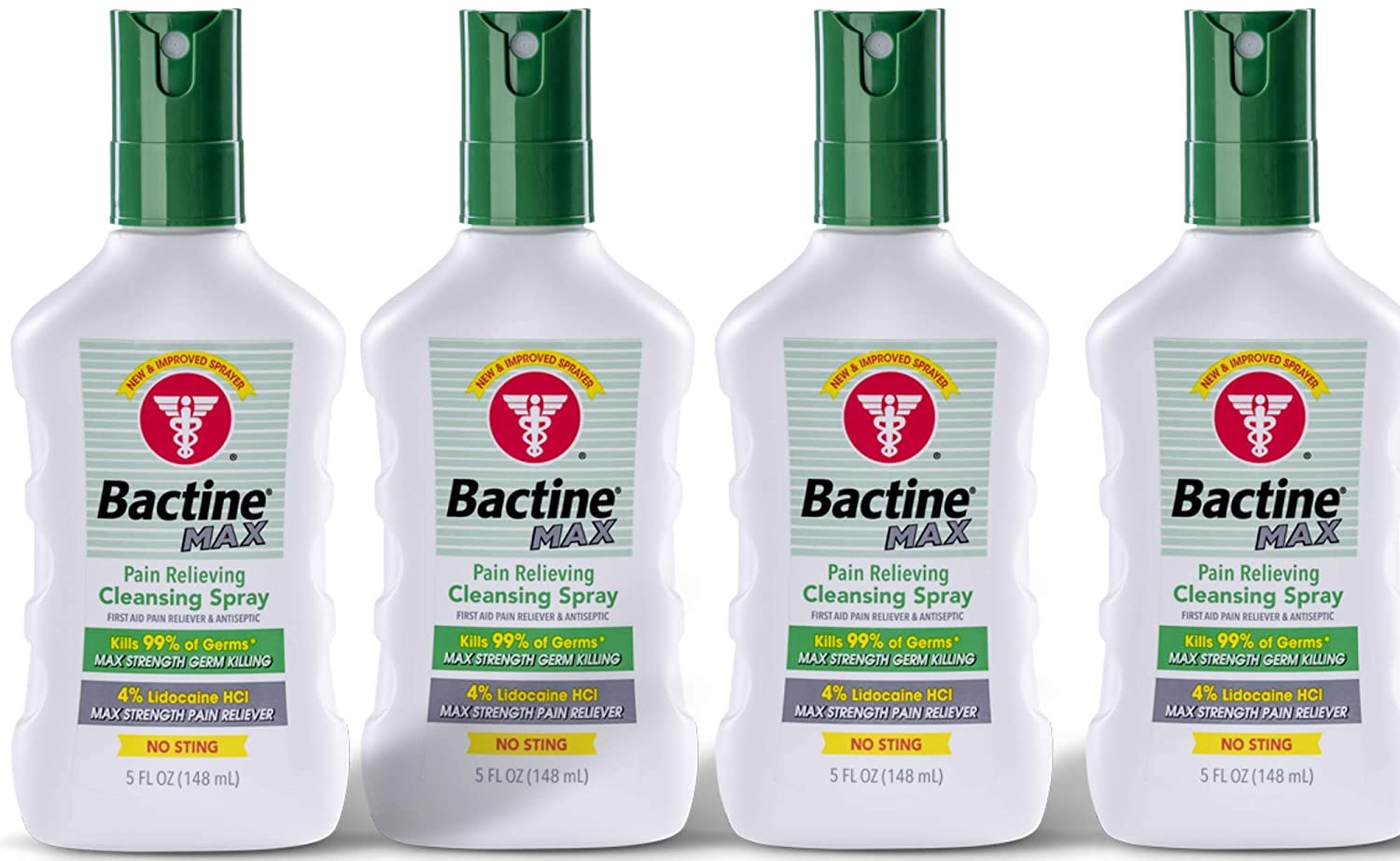Bactine is a common over-the-counter medication used to treat a variety of skin infections.
It is made up of two ingredients: lidocaine and benzalkonium chloride.
Lidocaine is a local anesthetic that numbs the area where it is applied, while benzalkonium chloride is a disinfectant that kills bacteria.
This antiseptic and pain reliever is used to cleanse minor cuts, scrapes, and burns in both humans and pets.
It can also be used to relieve the pain and itch of insect bites. It is available as a spray, lotion, or swab.
While there is no concern for the use of this medicine on humans, the jury is still out on its safety for cats.
In this post, we will discuss whether or not Bactine is safe for cats and provide some tips on how to safely treat your cat’s skin infection.
Is Bactine safe for cats?

The short answer is yes, Bactine is safe for cats when used as directed.
Bactine contains Lidocaine which can be toxic to animals if ingested in large quantities, but when used topically as directed, it poses no threat to pets.
However, pets should never be given Bactine unless directed by a veterinarian.
If your pet gets into your medicine cabinet and ingests Bactine, contact your veterinarian or emergency animal hospital immediately.
Symptoms of toxicity include vomiting, diarrhea, convulsions, and difficulty breathing.
Never give your pet any medication without first consulting your veterinarian.
Safety Concerns
One of the main concerns about using Bactine on cats is the potential for lidocaine toxicity.
Lidocaine can be toxic if it is absorbed into the bloodstream in large amounts.
But this shouldn’t be a big deal because the amount of lidocaine that is absorbed through the skin is very small and is quickly metabolized by the liver. Cats also have a higher tolerance for lidocaine than humans do.
The side effects of Bactine is another concern. Lidocaine can cause vomiting, diarrhea, lack of coordination, tremors, and seizures in Cats.
If your cat is already susceptible to seizures and tremors, or if it has any other underlying health issue, it might be a good idea to avoid using Bactine.
Another concern is the ingestion of the drug. Lidocaine can be toxic when ingested in large quantities.
Since cats like self-grooming, they could potentially ingest a large amount of Bactine if it were sprayed on their fur.
Knowing these concerns is the first step in using the drug safely. Here are a couple of other things you can do to ensure you use the drug safely:
- Do not use Bactine (or any other over-the-counter medication) on your cat before consulting with the vet. If you have any safety concerns, talk to your vet about them and they will advise accordingly.
- Always follow the directions on the label. Pay particular attention to the mode of delivery, dosage, and any safety directions.
- Bactine should only be used on open wounds or infected areas of the skin. It should not be used as a general body spray or for any other purpose.
- Take precautions when applying Bactine to ensure it doesn’t get to your cat’s eyes, nose, and mouth.
- If accidentally ingested, contact your veterinarian immediately.
- Always store Bactine out of reach of children and pets.
By following these simple guidelines, you can help ensure that your cat receives the best possible care.
How to Use Bactine on Your Cat
To use Bactine on your cat, start by gently cleaning the affected area with warm water and soap.
Once the area is clean, apply a small amount of Bactine to a cotton ball or swab and dab it onto the wound.
You should see improvement within a few days. If the wound does not appear to be healing, or if your cat is showing signs of discomfort, please consult your veterinarian.
With proper care, most wounds will heal quickly and without complication.
Alternatives to Using Bactine on Your Cat

There are some alternatives to Bactine if you want to avoid it altogether.
For starters, you can use a warm compress on the area for five to ten minutes three times a day. This will help to increase blood flow and speed healing.
You can also make a mixture of one-part water and one-part vinegar to clean the wound site.
Apply the mixture with a clean cloth and allow it to dry on its own.
There are also many over-the-counter ointments that are safe to use on cats, such as Neosporin or Polysporin.
Ask your veterinarian for their recommendation before using any over-the-counter medications on your cat.
Parting Thoughts
Bactine is a safe and effective topical antiseptic that can be used on cats of all ages.
It is important to follow the instructions on the label when using Bactine, as improper use could cause more harm than good.
When used as directed, Bactine will help to clean and disinfect wounds, and can also be used to soothe insect bites and stings.
Related Post: Is Calamine Lotion Safe For Cats?

Hi! I am Eleanor Price. I started this website after my cat, Louie, almost died from a case of botulism (a type of food poisoning often caused by bacteria that grow on food items). Turned out that my cat’s diet was the problem. I have made it my duty to provide the best information and recommendations about everything cat lovers need to know about their felines’ health and wellbeing. My goal is to find the most informative content on anything feline-related and share it with fellow hardworking kitty lovers.

